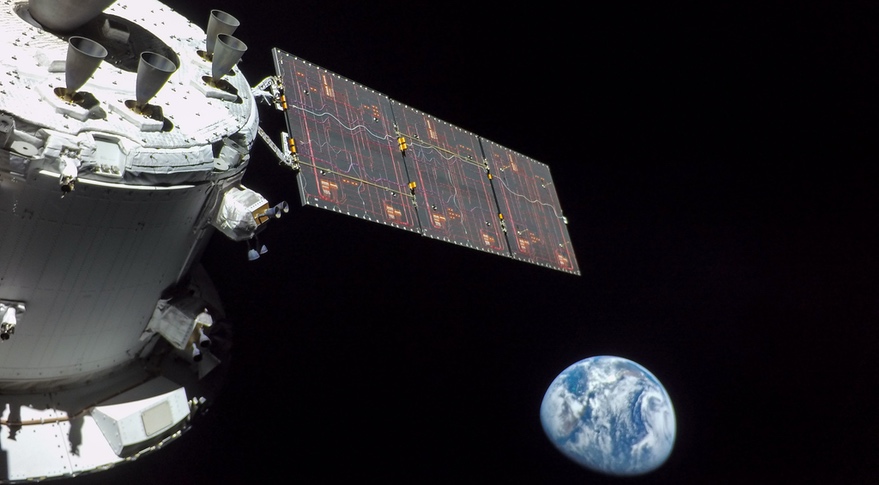WASHINGTON — NASA has approved plans to proceed with the next critical milestone in the Artemis 1 mission, a maneuver by the uncrewed Orion spacecraft as it flies by the moon Nov. 21.
NASA announced late Nov. 19 that the Artemis 1 mission management team approved the outbound powered flyby (OPF) maneuver, a burn by Orion’s main engine as the spacecraft passes about 130 kilometers above the lunar surface. The maneuver will send Orion out towards a distant retrograde orbit around the moon.
The burn, slated to last two and a half minutes, is scheduled for 7:44 a.m. Eastern Nov. 21. The maneuver will take place while the spacecraft is behind the moon, during a 34-minute blackout period between 7:25 a.m. and 7:59 a.m. Eastern when the spacecraft is not in communication with Earth.
“This is absolutely a critical burn. It’s one that Orion has to perform,” said Jim Geffre, Orion vehicle integration manager at NASA’s Johnson Space Center, during a Nov. 18 briefing. The burn can be done by the main engine or several auxiliary thrusters if there is a problem with the main engine. “We designate it as critical, which it why we configured the software to ensure that burn happens.”
A second maneuver, scheduled for Nov. 25, will insert Orion into the distant retrograde orbit, going as far as 432,000 kilometers from the Earth. It will remain in that orbit for six days before performing two more maneuvers to exit the orbit and fly by the moon again, returning to Earth.
At the briefing, agency officials said Orion had been operating well since its Nov. 16 launch on the test flight. “Overall, the mission, in just three short days, is proceeding and exceeding expectations,” said Mike Sarafin, Artemis 1 mission manager, at the Nov. 18 briefing.
The mission has not been problem-free, though. He said they reviewed 13 anomalies, most of which he said were “relatively benign” and learning about system performance. One issue, with the spacecraft’s star trackers, did require convening an anomaly resolution team that concluded its work by the Nov. 18 briefing.
Sarafin said the issue with the star trackers was “dazzling” of the imagers by thruster plumes. “The thrusters were being picked up by the star tracker because it was thrusting over the field of view of the star tracker, by design,” he said. “The light was hitting the plume and it was picking it up,” confusing the software.
“The star tracker itself is performing perfectly,” Geffre said, noting the issue came from a combination of factors that could not be fully simulated on the ground. He said he expects to see the issue “periodically” through the rest of the mission but the team now is ready to handle it.
The problem never violated flight rules, said Jeff Radigan, a flight director. “It was really a case that we were seeing something that we didn’t understand,” he said. “At all times they were providing us measurements that were able to allow the mission to proceed.”
Sarafin said the agency was also still assessing the performance of the Space Launch System rocket that launched Orion. “All indications were that the system performed spot-on,” he said, noting that the core stage and boosters placed Orion and its ICPS upper stage very close to its planned altitude, and that the ICPS burn that sent Orion to the moon “was exactly where we had intended.”
The launch also caused some damage to ground systems, like the mobile launch platform, creating hazards at the pad that delayed photographers from picking up remote cameras for two days. That included nitrogen and helium gas leaks, as well as elevator blast doors that were blown off, taking the mobile launcher elevator out of service, according to Sarafin.
“We did anticipate some amount of damage, and they are finding some amount of damage,” he said. “The mobile launcher itself performed well. We’re just having to work our way through some of the damage assessments.”
